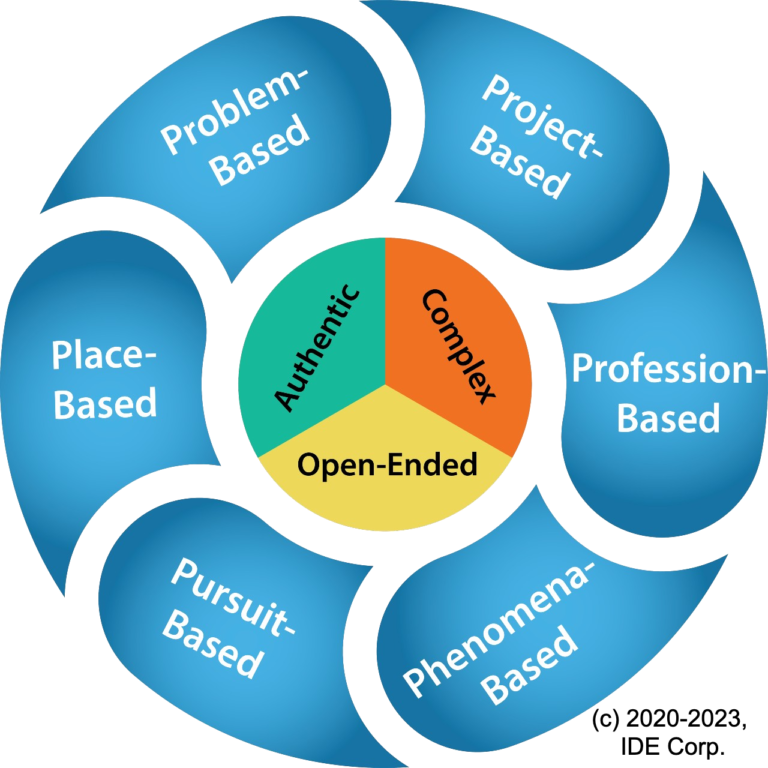Redesigning Your Curriculum with PBL
How do we design a curriculum that not only educates but also engages? We at EdQuiddity believe that the answer lies in anchoring learning experiences around authentic, real-world problems. Traditional approaches to education can sometimes leave students disinterested and disconnected from their studies. However, by redesigning your curriculum to include a Problem-Based Learning (PBL) approach, schools can transform their instruction to foster active participation, critical thinking, and a deeper understanding of concepts through practical application.

Why Problem-Based Learning is Effective in Teaching and Learning
Problem-Based Learning (PBL) has gained traction in educational circles for its efficacy in cultivating essential skills beyond rote memorization. One of the key strengths of PBL is its ability to immerse students in complex, real-world problems. By presenting students with authentic challenges, PBL encourages them to delve deeper into the subject matter, fostering curiosity and a sense of ownership over their learning, resulting in student engagement and retention of learning. This approach nurtures critical thinking, collaboration, and problem-solving skills—attributes that are important for success in life.

The 6 Ps of Problem-Based Learning: Problem, Project, Place, Profession, Pursuit, Phenomenon
Our sister company, IDE Corp, redefined the Problem-Based Learning (PBL) framework to include 6 anchors (defined below) that can drive a unit of study: Problem, Project Place, Profession, Pursuit, and Phenomenon. This approach engages students in learning experiences that are anchored in meaningful contexts.
- Problem centers around tackling authentic challenges
- Project entails a hands-on application of knowledge
- Place refers to situating learning within relevant environments
- Profession relates to connecting learning with future career pathway
- Pursuit emphasizes student-driven exploration
- Phenomenon underscores the interconnectedness of disciplines
Launching a unit with one of the 6 Ps creates an atmosphere of continued motivation, and engaged learners who are empowered to take charge of their learning. Our PLE supports your staff in redesigning your curriculum to engage students through PBL. Check out Dr. Nancy Sulla’s video below, which discusses our 6 Ps framework, as a glimpse into our professional learning experiences.
Empower Your Staff with our PBL Professional Learning Experience
We partner with schools to help redesign their curriculum to include a PBL approach to learning. One of our innovative solutions includes our professional learning experience (PLE) on Engaging Students Through the 6 Ps of PBL, which empowers educators to leverage these principles and redesign their curriculum for enhanced student engagement and academic achievement. Is your school ready to embrace the transformative potential of Problem-Based Learning (PBL)? Contact us today to enroll your entire staff in our comprehensive PBL professional learning experience.


 In this course, participants will leverage choice and technology to provide students with the ultimate differentiated learning environment. They will develop differentiated digital activity lists rooted in rigorous instruction that offer multiple ways to learn and apply content. Participants will explore autonomy, purpose, and mastery as motivators in all learning environments. They will design differentiated activity lists to put students in charge of their own learning, creating a structure that allows students to make decisions within a structured framework. Making informed decisions is an essential life skill that teachers can support with intentional classroom practices.
In this course, participants will leverage choice and technology to provide students with the ultimate differentiated learning environment. They will develop differentiated digital activity lists rooted in rigorous instruction that offer multiple ways to learn and apply content. Participants will explore autonomy, purpose, and mastery as motivators in all learning environments. They will design differentiated activity lists to put students in charge of their own learning, creating a structure that allows students to make decisions within a structured framework. Making informed decisions is an essential life skill that teachers can support with intentional classroom practices. Participants in this course will use Reinventing the Classroom Experience by Dr. Nancy Sulla as a resource. The assigned book must be
Participants in this course will use Reinventing the Classroom Experience by Dr. Nancy Sulla as a resource. The assigned book must be